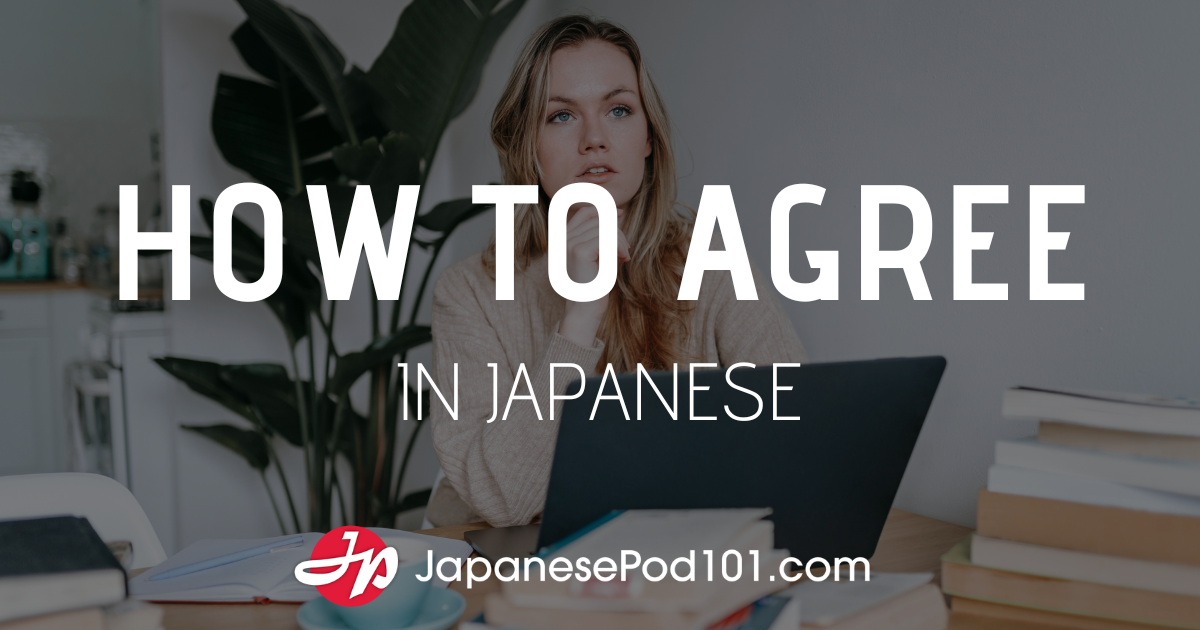
Whether you’re just starting to learn Japanese or getting ready for a trip to Japan, one of the first things you’ll want to master is how to say yes in Japanese. Being able to say yes, OK, or I agree in the Japanese language is essential for everyday conversations and helps you connect with people more easily.
Japanese actually has multiple ways to express agreement depending on context and politeness, which makes it even more important to learn the correct phrase for the right situation. In this guide, we’ll set the stage by explaining why these simple words matter and even answer common beginner questions like how to write yes in Japanese, before diving into the specific words and phrases you can use to agree naturally.
はい (hai) – The Standard “Yes”
The most straightforward word for yes in Japanese is はい (hai). You can use はい in almost any context – it’s appropriate in formal situations, everyday conversation, and even as a response to get someone’s attention. For example, if a teacher calls on you, answering with “はい” is like saying “Yes, [I’m here]”.

- Meaning: “Yes” / “I agree.”
- Usage: Use はい to answer questions affirmatively, to respond when someone calls you, or to show you’re listening. For instance, if someone asks “Do you understand?”, you can reply “はい” to mean “Yes, I do.” It’s a polite and neutral response.
- Writing: はい is written in hiragana (since it’s a native Japanese word and has no kanji). If you’re new to Japanese, just remember that はい is pronounced like the English word “high” (with a clipped i sound).
はい is extremely common. In fact, Japanese people often say はい repeatedly during a conversation to show active listening (similar to nodding along). It’s a safe, all-purpose “yes” in Japanese.
Casual Ways to Say “Yes” (Informal Agreement)
Japanese has several informal words for “yes” that you’ll hear in everyday conversations among friends or family. If you’re talking with close acquaintances, using these casual affirmatives will make you sound more natural. Here are some of the common “yeah” in Japanese equivalents:
- うん (un) – This is a very casual, conversational yes. It sounds like “mm” or “uhn” said with a nasal tone. You can use うん just like you’d say “yeah” or “uh-huh” in English. For example, if a friend asks “Wanna grab lunch?”, you could reply “うん, 行こう” (un, ikō), meaning “Yeah, let’s go.” Be careful: Don’t use “うん” in formal settings, like work or with strangers. It’s best kept among friends. Also, note that dragging it out like “うーん” can sound like you’re hesitating or saying “umm…”, so keep it short and crisp to mean “yes.”
- ええ (ee) – “Yes (informal/polite).” This is a relaxed yes, a bit like saying “yeah” or a casual “yes” in English. ええ is slightly less formal than はい, but it’s often used in polite conversation as well. You might hear ええ especially among family or in workplaces where the atmosphere is friendly. For example, if someone you know asks “Is it okay if we start the meeting?”, you could say “ええ、いいですよ” (ee, ii desu yo), meaning “Yeah, that’s fine.” In terms of politeness levels, はい is the most formal, ええ is semi-formal, and うん is very informal. So, ええ is a nice middle-ground: polite enough but not stiff. (Tip: Be careful not to confuse this with the English “eh?” sound – ええ in Japanese clearly means yes!)
- ああ (aa) – “Uh-huh / I see.” This one is less commonly taught, but you’ll sometimes hear aa or ああ、うん in conversation when someone is agreeing with what they’re hearing, like “Ah, yes (I see).” It’s more of a back-channeling word (an aizuchi), to show you’re following along. As a learner, you can interpret ああ as a casual “yeah, got it.”
- もちろん (mochiron) – “Of course.” This word means “of course” or “certainly,” and it’s used to emphatically say “yes, absolutely.” For instance, if someone asks “Do you want to join us for karaoke?”, you can reply “もちろん!” meaning “Of course!” もちろん adds enthusiasm — it tells people the answer is obviously yes. It’s appropriate in both casual and polite conversation. To be polite, you might say “もちろんです” or “もちろんですよ”. You can even double it for effect: “もちろん、もちろん” (“Yes, of course, definitely!”).
These casual yes-words are great to know because they make your Japanese sound natural. Just remember to match the level of politeness to the situation. Saying “うん” to your boss, for example, would be too informal – in a formal situation, stick with はい or other polite phrases (more on those soon).
Expressing Agreement: Saying “I Agree” in Japanese

Sometimes you want to say more than just “yes” – you want to agree with someone’s statement or opinion (“Yes, I agree with you”). In English, we might say “Exactly” or “I agree.” In Japanese, there are dedicated phrases for that nuance of agreeing with someone’s point. Here are a few useful ones:
そうです (sou desu) / そうですね (sou desu ne) – “That’s right” or “I agree, isn’t it.”
This is a very common way to agree with a statement. そうです literally means “it is so,” basically “that’s true.” Adding the particle ね (ne) makes it sound a bit softer, like “Yes, right?” with an inviting tone of agreement. This phrase is extremely versatile; you can use it to agree without sounding too committal. In conversation, そうですね roughly translates to “Right, isn’t it?” or just “Yes, indeed”. For example:
As shown, “そうですね” is a natural way to show you agree. It’s not as strong as saying “I completely agree,” but it affirms the other person’s comment. It can also be used just to acknowledge something like a quick “OK” when a response is expected, but you have no strong opinion. In fact, Japanese speakers sometimes even start a response with “そうですね…” even if they don’t agree, as a filler while they formulate a different opinion (similar to “Well, let me see…”). But generally, use そうです(ね) to agree in a conversational, polite way.
賛成です (sansei desu) – “I agree.”
This phrase literally means “(it) is approval.” 賛成 (sansei) is a noun for agreement/approval, so saying sansei desu is like saying “(I am) in agreement.” It’s a clear, strong way to say “I agree with that.”. For example, if someone suggests “We should take a break now,” you can say 「賛成です。」 (Sansei desu.) meaning “I’m in agreement (I approve).” This sounds polite and sincere. It’s commonly used when formally agreeing in meetings or discussions. If you want to be even more casual, you could just say 「賛成!」 with a smile. Think of sansei desu as “I second that” or “I’m all for it.”
その通りです (sono tōri desu) – “Exactly (as you said).”
This phrase means “(it is) as that way (you said).” It’s like saying “Exactly!” or “You’re absolutely right.” It’s a strong agreement with what the other person said. For extra emphasis, you’ll often hear 全くその通りです (mattaku sono tōri desu), which means “Exactly so” or “I totally agree with you 100%.” The word 全く (mattaku) means “entirely/completely,” so adding it makes your agreement emphatic. Use this when you want to wholeheartedly agree with a statement. For example:
「日本の電車は時間に正確ですね。」 (“Japanese trains are punctual, aren’t they?”)
「全くその通りです。」 (“I couldn’t agree more.” / “Exactly right.”)
確かに (tashika ni) – “Indeed” or “That’s true.”
This is a very handy adverb used to subtly agree by acknowledging a truth. 確かに means “certainly” or “indeed, as you say.” You use it when you realize the other person has a valid point, almost like “You know, that’s true.” For instance, if someone says “This restaurant is always crowded.”, you might nod and say 「確かに。」 (Tashika ni.) meaning “Indeed (it is).” It implies “now that you mention it, that’s true.” This word fits both casual and formal conversations and doesn’t require です after it. Grammatically, it’s an adverb, so sometimes you’ll see it before a phrase (e.g., 「確かに、そうですね。」 – “Indeed, that’s right.”). Remember tashika ni as a more thoughtful way to agree with an observation. (Fun fact: It’s often listed as Japanese slang for “agree,” though it’s not really slang – just a common aizuchi response.)
By using these phrases, you can do more than just say “yes” – you can actively agree and confirm someone’s opinion. Phrases like sou desu ne and tashika ni also help keep the conversation flowing by showing you’re engaged and agreeing. For learners and travelers, sprinkling in an 「そうですね」 or 「確かに」 in response to someone’s statement will make your Japanese sound very natural.
“OK” in Japanese: Saying “Sure” or Giving Permission

Often, saying “yes” is about indicating “okay”—that something is acceptable or that you consent to it. English speakers say “OK,” “sure,” or “all right” in these cases. Japanese has a variety of words for this kind of yes/okay:
- オッケー (okkē) – “OK.” This is simply the English word “OK” pronounced in Japanese style (and usually written in katakana). It sounds like “ohk-keh”. Japanese people do use オッケー in casual speech, especially younger people, to mean “OK” or “sure.” For example, 「明日会える?」 (“Can we meet tomorrow?”) – 「オッケー!」 (“OK!”). Since it’s borrowed from English, it has a very informal feel. You wouldn’t use okkē in a formal meeting, but with friends it’s perfectly fine.
- いいよ / いいですよ (ii yo / ii desu yo) – “Sure” or “It’s okay.” This literally means “It’s good” or “It’s fine.” Use ii yo (casual) or ii desu yo (polite) to give permission or say “sure, go ahead.” For instance, if a coworker asks “May I borrow this pen?”, you can reply 「いいですよ。」 (Ii desu yo.) meaning “Sure, it’s fine.” Or if a friend says “I’ll pick the restaurant, okay?”, you could say 「いいよ」 (“Alright/okay”). Be careful with intonation: If you say いいよ too bluntly or with a falling tone, it might sound like “No, that’s okay (I don’t need it)” in the sense of declining. (In Japanese, a strongly said “いいよ!” can sometimes imply “No, don’t bother!” as in “No need, I’m fine.”) To be safe, say it with a light, upbeat tone when you mean “sure!”. The particle よ conveys a sense of giving information or assurance, so いいですよ comes across as a friendly form of permission.
- 大丈夫 (daijoubu) – “Alright / No problem / I’m okay.” This word 大丈夫 has a few uses, but it often means “okay” in the sense of “I’m okay” or “it’s okay, no worry.” If someone asks you “Are you okay?”, you can answer 「大丈夫です」 (Daijoubu desu) – “I’m fine.” But how is this a yes word? Imagine someone offers you something or asks if you need help. If you reply 「大丈夫です」, you might be saying “It’s okay, I’m good (I don’t need it).” In that case, daijoubu actually functions like a polite “no, thank you.” On the other hand, if someone asks “Is it okay if I sit here?”, you could reply 「大丈夫ですよ。」 to mean “It’s okay (sure, go ahead).” So context matters: 大丈夫 literally means “fine” or “alright.” Depending on context, it can imply yes (it’s alright) or no (I’m alright, implying no need). As a beginner, remember 大丈夫 as a way to reassure. To agree, you might use it like: “Is everything okay?” – 「大丈夫です。」 (“Yes, it’s all good”). And if you don’t want something: “Do you want more tea?” – 「大丈夫です。」 (with a polite head shake) meaning “No, I’m okay (I’m fine as is).”
- わかりました (wakarimashita) – “Understood / Got it.” This is the past form of わかる (to understand), and it’s a very common response when you want to say “Yes, understood” or “Got it.” If your boss or teacher gives you an instruction, replying 「わかりました」 is a polite way to say “Yes (I understand and will do it)”. It shows both agreement and comprehension. For example, if someone says “Please send this email by 5 PM,” you respond 「はい、わかりました。」 (“Yes, understood.”). In casual speech, the shorter form わかった (wakatta) is used the same way (“OK, got it”). This isn’t “yes” in the literal sense, but it’s absolutely an agreement word – it confirms you are saying yes to a request or proposal by showing you understand.
- 了解です (ryoukai desu) – “Understood / Roger.” 了解 (ryoukai) means “acknowledgment” or “understanding.” Saying 「了解です」 is like “Roger that” or “Gotcha.” It’s somewhat informal, used often among colleagues or friends, or even in texting, to say “okay, noted.” For instance, if your friend says “Let’s meet at 6 PM, okay?”, you could reply 「了解!」 (“Got it!”). In a work context, 「了解しました」 (ryoukai shimashita) is a more polite way to say “I have understood (and will comply)”. However, be cautious: some superiors prefer wakarimashita or more polite terms, as ryoukai can sound a bit casual. If speaking to someone higher in rank (like your boss), a safer bet is the next phrase, かしこまりました, or even 承知しました (shouchi shimashita, another formal “understood”). Still, among equals, 了解 is very common. Example: 「明日の会議は午後2時からです。」 (“Tomorrow’s meeting is from 2PM.”) – 「了解です。」 (“Understood/Okay”).
Polite “Yes”: Formal and Respectful Agreements

When speaking with superiors, elders, or customers, you’ll want to level up your “yes” to a more polite or respectful form. Japanese culture values polite language (keigo), and there are special phrases that essentially mean “yes, certainly” in a very respectful tone. If you’re a traveler, you might hear these in customer service situations (for example, store clerks answering you), and if you’re working in Japan, you’ll definitely need them. Here are key polite agreement phrases:
- かしこまりました (kashikomarimashita) – “Certainly”. This is a beautiful, humble way to say “Certainly, sir/ma’am.” It roughly means “I have respectfully understood (your request).” You will hear kashikomarimashita often from service staff. For example, if you ask room service for extra towels, they might reply 「かしこまりました。」 (meaning “Certainly, right away”). This word is a form of respectful keigo, used to address customers or others of higher status. In a workplace, you’d use it with your boss or clients. It’s basically a very polite yes to a request, conveying full compliance. As a traveler, you might not need to say it, but it’s good to recognize it as a super-polite “yes, understood.” And if you work in Japan, using kashikomarimashita appropriately will impress people with your politeness. (Note: Since it’s a bit long, some people casually shorten it in speech to “かしこまりましたぁ” or even just かしこまり in texting, but stick to the full word in formal situations.)
- 承知しました (shouchi shimashita) – “Understood (polite).” This is another formal way to acknowledge instructions, basically equivalent to ryoukai shimashita, but a step more polite. 承知 means “consent/knowledge.” Saying 「承知しました」 means “I have received and understood (what you said).” Like かしこまりました, this is used toward superiors or customers. For example, your boss says, “Please schedule a meeting,” you reply, 「承知しました。」 (“Certainly/understood”). It’s a nice, business-level polite yes.
- はい、[title] – “Yes, [Sir/Madam].” While Japanese doesn’t have a direct word for “sir” or “ma’am,” you address people by titles or honorifics. If a teacher calls you, you respond 「はい、先生」 (Hai, sensei) – “Yes, teacher.” If your manager calls, 「はい、部長」 (Hai, buchō) – “Yes, Manager.” Simply responding with はい in a firm tone can also serve as “Yes, sir!” in contexts like the military or sports clubs. The key is your tone and body language. But generally, in offices or stores, staff will use the polite phrases above rather than just はい when speaking to clients or bosses.
- 畏まりました (kashikomarimashita) vs 了解しました (ryoukai shimashita): When talking to someone much higher in rank, it’s better to use かしこまりました (very honorific) instead of 了解しました . As a rule of thumb, 了解 is OK among peers, but not when you’re talking to your CEO. This distinction is worth keeping in mind if you work in Japan. For travelers or casual learners, just recognize that service staff saying “かしこまりました” to you is a super polite acknowledgment of your request (like “certainly, understood”).
In summary, when you need a very polite yes, go with phrases like かしこまりました or 承知しました, or a polite はい with the person’s title as appropriate. These convey respect and willingness to comply. They effectively mean “yes, absolutely (I will do as asked).”
For everyday polite speech, though, はい or ええ with the right tone is usually sufficient. Save the ultra-honorific yes for the right occasions.
“Yes, Please” – Accepting an Offer
If someone offers you something or asks for your preference and you want to respond “Yes, please,” Japanese has a handy construction: はい、お願いします.
- はい、お願いします。 (Hai, onegaishimasu) – “Yes, please (do it).” Use this when you do want to politely accept an offer or request someone’s assistance. For example, if a server asks “お水をお持ちしましょうか?” (“Shall I bring you some water?”), you can reply 「はい、お願いします。」 meaning “Yes, please (go ahead and do so).” The word お願いします comes from お願い (request) and basically means “I ask a favor” or simply “please.” So はい、お願いします literally is “Yes, (do me the favor,) please.” This is very common and polite when interacting with service staff or when accepting help from colleagues.
You can also use ぜひ、お願いします (zehi, onegai shimasu) to mean “Yes, please, by all means!” ぜひ means “certainly/definitely,” adding enthusiasm. For instance, if a friend says “Would you like to try homemade sushi?”, you might reply 「ぜひお願いします!」 (“Yes, please, I’d love to!”).
Another way to say “yes, please” in contexts like “Yes, please [do that or give me that]” is to simply say the item or action plus ください (kudasai, “please give/do”). For example: 「お写真、見てもいいですか?」 (“May I see the photos?”) – 「はい、どうぞ。見てください。」 (“Yes, go ahead. Please look”).
Here, どうぞ is like “go ahead,” and 見てください is “please look.” But as a beginner, 「はい、お願いします」 will cover most situations where you want to politely accept or encourage something.
Conclusion

Learning these various ways to say yes in Japanese will greatly improve your communication, making it more natural and culturally appropriate. From a simple はい to an enthusiastic もちろん!, or a polite かしこまりました, you now have a toolkit of agreement phrases.
How to say “yes” in the Japanese language depends on context – but with these examples, you’ll be able to handle everything from agreeing with a friend’s idea (“いいですね!”) to respectfully accepting your manager’s request (“承知しました”).








